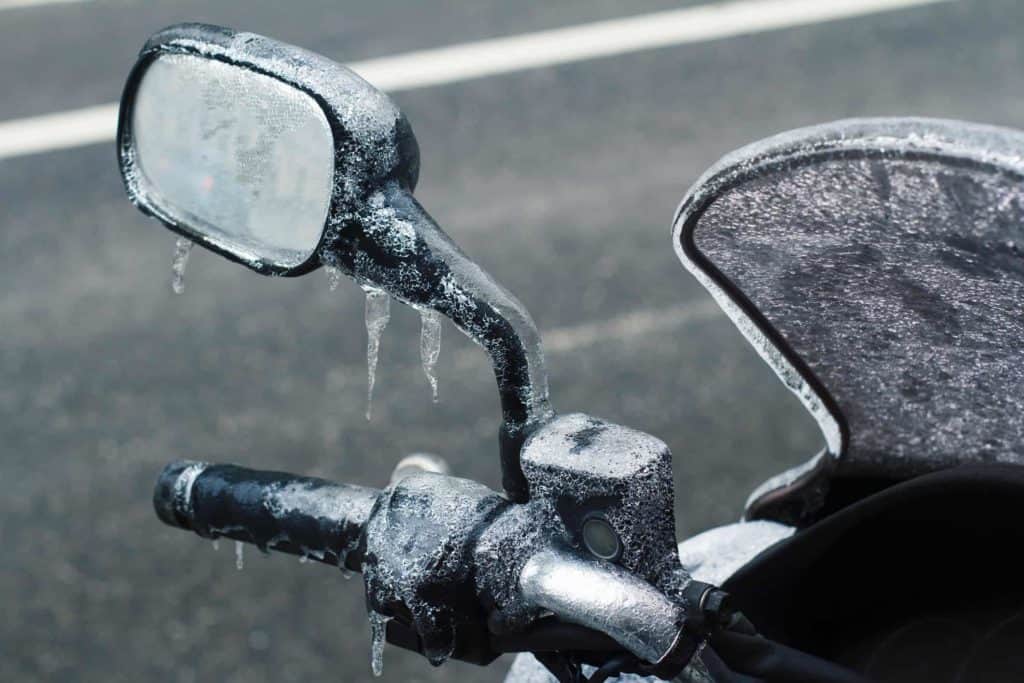
At Gruber Law, we have represented many people injured in motorcycle accidents. Some of these injuries can be catastrophic and life-changing and often the motorcycle rider involved needs passionate and aggressive legal representation to ensure they get the results possibly given the circumstances. But what are the most common causes of motorcycle accidents and how is fault determined?These are questions that motorcycle accident lawyers often ask when taking on and investigating a new case. Some of the most common causes of motorcycle accidents can help tell us more about why these accidents occur and can also help lawyers, juries, and insurance companies determine who is at fault for the crash.
Common Causes for Motorcycle Accidents
Understanding the most common causes of motorcycle accidents may also help the cyclist avoid them altogether. Though traveling on the road will always have some inherent danger, the more steps a rider and others can take to mitigate that danger, the better.
For a free legal consultation, call (414) 276-6666
Failure to See The Motorcyclist
 The broadest and most common cause of motorcycle accidents is driver negligence and failure to see the motorcyclist. Unfortunately for motorcycle riders, drivers sometimes simply cannot see them. This is the likely the primary cause of most motorcycle accidents.Left Turns Cause More Accidents. Motorcycle awareness is at its lowest when cars or trucks are making left turns. According to the US Department of Transportation, 42% of all fatal motorcycle crashes in 2020 occurred when other vehicles were making a left turn while the motorcycles were going straight, passing, or overtaking other vehicles. [1]Riders can take the following steps to decrease their chances of a motorcycle accident based on driver negligence.
The broadest and most common cause of motorcycle accidents is driver negligence and failure to see the motorcyclist. Unfortunately for motorcycle riders, drivers sometimes simply cannot see them. This is the likely the primary cause of most motorcycle accidents.Left Turns Cause More Accidents. Motorcycle awareness is at its lowest when cars or trucks are making left turns. According to the US Department of Transportation, 42% of all fatal motorcycle crashes in 2020 occurred when other vehicles were making a left turn while the motorcycles were going straight, passing, or overtaking other vehicles. [1]Riders can take the following steps to decrease their chances of a motorcycle accident based on driver negligence.
- Wear bright, highly visible colors
- Take extra care when driving through busy intersections and keep an eye on cars making left turns
- Avoid riding in a driver’s blind spot
Some of the most common advice given to new riders at motorcycle safety courses is to assume you are invisible to other vehicles [6].
Impaired Riding
 Drug and alcohol use is another one of the most common causes of motorcycle accidents in the United States. Riders who drive under the influence of alcohol and other substances are at higher risk.In roughly 27% of all fatal motorcycle accidents in 2020, the motorcyclist was alcohol-impaired (BAC of .08 g/dl or greater).
Drug and alcohol use is another one of the most common causes of motorcycle accidents in the United States. Riders who drive under the influence of alcohol and other substances are at higher risk.In roughly 27% of all fatal motorcycle accidents in 2020, the motorcyclist was alcohol-impaired (BAC of .08 g/dl or greater).
- To avoid accidents and possible legal ramifications related to alcohol use, riders should take the following precautions
- Be smart with your choices
- Don’t drink and drive
- Use a ridesharing app and get dropped off at the location so you cannot ride your motorcycle home
Use a ridesharing app or call someone if you feel if have consumed alcohol before riding. Remember that a BAC of .08 g/dl is called the presumptive alcohol limit in Wisconsin.
Click to contact our personal injury lawyers today
Speeding
 When considering that motorcycle awareness is the leading cause of motorcycle accidents, it’s always important to ride defensively when operating a motorcycle.In order to decrease the number of speed-related motorcycle accidents, a rider should adhere to the following rules.
When considering that motorcycle awareness is the leading cause of motorcycle accidents, it’s always important to ride defensively when operating a motorcycle.In order to decrease the number of speed-related motorcycle accidents, a rider should adhere to the following rules.
- Stick to all posted speed limits at all times and also consider the driving conditions at that time
- Try to maintain a consistent speed when traveling on the roadways
- Improve your own visibility so other drivers can see you
- Do not speed in an attempt to catch up with a group of riders if you have fallen behind
Because a rider has much less protection, a speed-related accident can be much more serious as far as injuries are concerned.
Complete a Free Case Evaluation form now
Inclement Weather
 Unfavorable weather conditions also have a major impact on motorcycle accidents. Although the weather is typically not considered the main cause of the accident, inclement weather conditions can contribute to accidents related to speeding and car driver negligence.Heavy rain may obstruct a rider’s visibility as well as the visibility of other vehicles in attempting to see the roadways. Additionally, the ice and snow conditions that are typical during winter in the Midwest can create hazardous road conditions leading to more slips and making emergency stopping much more difficult.In order to prevent accidents during hazardous weather conditions, riders should keep the following advice in mind.
Unfavorable weather conditions also have a major impact on motorcycle accidents. Although the weather is typically not considered the main cause of the accident, inclement weather conditions can contribute to accidents related to speeding and car driver negligence.Heavy rain may obstruct a rider’s visibility as well as the visibility of other vehicles in attempting to see the roadways. Additionally, the ice and snow conditions that are typical during winter in the Midwest can create hazardous road conditions leading to more slips and making emergency stopping much more difficult.In order to prevent accidents during hazardous weather conditions, riders should keep the following advice in mind.
- Plan ahead and avoid riding when the forecast shows signs of unfavorable weather
- Ride cautiously and defensively
- Leave room for the vehicles ahead of you on the road
- Check your motorcycle and equipment before you ride
Motorcycle Accident Statistics
In order to fully understand the magnitude of motorcycle accidents, it’s best to understand some of the more nuanced motorcycle statistics.
- Roughly 3% of all vehicles on the road are motorcycles. [2]
- Despite this percentage, motorcycle accidents accounted for 14% of all traffic fatalities in 2020. [1]
- According to the National Highway Traffic Safety Administration, 35% of all fatal motorcycle accidents occurred at intersections in 2020. [1]
- Speeding is the cause of nearly 34% of all motorcycle-related accidents in 2020. [1]
- Accident rates for untrained riders (with 500 miles or less of riding experience) account for 90% of all motorcycle accidents. [3]
- In 76% of fatal motorcycle accidents, the rider was struck in the front by a car. [1]
- The majority of motorcycle accidents in 2020 occurred during rush hours, between the hours of 3 pm and 6 pm. [4]
- Wisconsin was 9th on the list for the most registered motorcycles in 2020 by state. [5]
Sources
- [1]: NHTSA: 2020 Data Motorcycles
- [2] NSC: Motorcycle Injury Facts
- [3] MSF: Evaluation of The California Motorcyclist Safety Program
- [4] Insurance Information Institute: Facts + Statistics
- [5] Motorcycle Legal Foundation: Motorcycle Statistics
- [6]: NHTSA: Pretend You’re Invisible
Disclaimer: This post provides general information but is not legal advice and should not be construed as legal advice.
Call or text (414) 276-6666 or complete a Free Case Evaluation form















